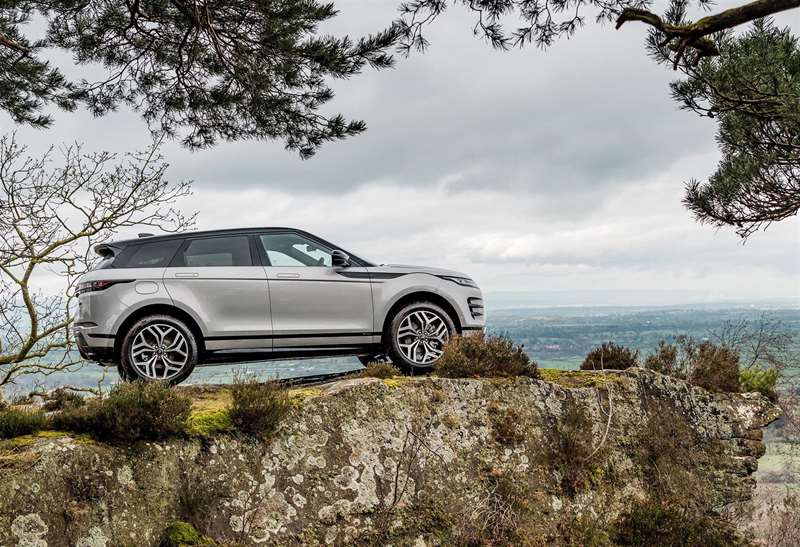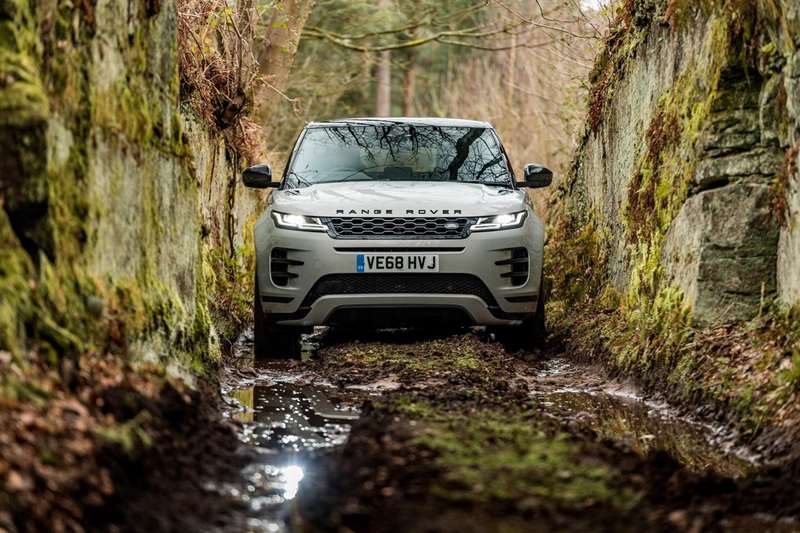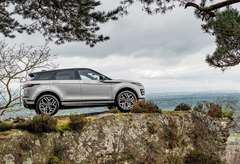What’s new?
The original Evoque went on sale eight years ago, with a fashion-first look that has certainly aged well. The second iteration, now on sale, keeps style to the fore.
Yet, as anyone familiar with the first Evoque will surely testify, it was a car which didn’t deserve to be rated by its design alone.
You might recall how some brand fans raised concern about this model being a sign that Land Rover was abandoning its rugged off-road roots? Evoque proved them wrong by delivering nearly as much off-seal ability as a standard Range Rover.
Nothing changes on that front. The supposedly same-again styling covers a same-again approach in terms of muck-ability: It’s more than capable off-road.
Where it gets ahead, however, is by changes that allow it to better match the on-road prowess of rivals such as the BMW X4, Audi Q3, Mercedes GLC.
For now all New Zealand-spec variants feature orthodox powertrains; either the 2.0-litre turbo-petrol of the P250-tagged test car or a turbo-diesel (badged the D180).
However, the Evoque has been future-proofed for electrification, with a 48-volt mild-hybrid system already available overseas, and a plug-in hybrid scheduled for launch next year.
What’s it like to look at?
Even though it’s claimed — with a straight face — that just the door hinges from the previous Evoque have been carried over, the sense that Land Rover has only lightly altered the design is overwhelming. It’s dead easy to tell that it’s an Evoque, though the styling is more modern, cleaner. The side profile looks as smart as before, with a similar sloping roofline to give the car a sporty look, but gone are the plastic mouldings around the sills and wheel arches.
It’s also obvious that some of the most strident revisions were nabbed from the company’s next-size-up Velar. These include slim-line headlights and door handles that auto-tuck into the doors when the car begins moving.
What’s it like inside?
A colleague who’d driven the car before me made an interesting comment. ‘‘This is a car that will sell itself from the inside.’’
I got the gist of what he meant. First, it’s plush, feeling and smelling every inch a Range Rover. And, again, a lot more like a Velar. As with that model, the overall design is bordering on minimalist.
The dual-screen infotainment screen from the Range Rover Sport and Vogue has also made it, so too a TFT instrument display.
It has the latest software for the sat-nav and associated infotainment but I wonder if there’s enough computing power to run it as effectively as you want: screen startup on test was sometimes slow, prompting several jabs to activate; on occasion, the Apple CarPlay connection would shut off for no obvious reason.
Still, the screens look classy. Tilting out when the car is turned on, the top display has the look of a premium smartphone. The lower display contains all the controls for the temperature and various drive mode and driver assistance systems. Two rotary dials operate multiple functions.
Thanks to an increase in wheelbase, the new Evoque sizes up on cabin dimension. The benefit is especially obvious in the second row of this five-seater, with an additional 20mm of rear legroom as well as improved headroom. The boot is wider too, realising an additional 10% capacity, with the rear seats now split 40:20:40.
What comes as standard?
When Jaguar Land Rover releases a new line, it starts with a ‘‘First Edition’’.
That was our test model. It’s based on the mid-range R-Dynamic SE and adds extras that collectively add less than the sum of their options listings to the price.
So, with Evoque you get a contrast black roof with panoramic glass, 20-inch wheels, ‘‘matrix’’ LED headlights, Cloud and Ebony leather, 14-way power-adjustable front seats with triple-memory settings and First Edition branding on the centre console and treadplates.
This variant is $12,000 more expensive than the standard SE. But you’re getting quite a few extras and some degree of exclusivity for the money.
Every Evoque goes strong on safety, with AEB, active cruise with stop and go, reverse camera, lane-keeping and a blind-spot minder featuring.
What’s it like to drive?
Delivering peak outputs of 184kW and 365Nm via a nine-speed automatic transmission, the test car was mechanically strong. A maker’s claim of seven seconds for the 0-100kmh dash seems on the money.
The smoothness of the power delivery is also appealing. Going for a quick overtake is better helped by manually dropping down a gear or two via the wheel-mounted paddle rather than waiting for the gearbox to kick down.
But, not helped by its boxy shape and 1893kg weight, it’s thirsty too: Average fuel burn from the week came to 12.6 litres per 100km; that’s almost on par with the last V8 Commodore I drove, and well shy of the official 7.9l/100km economy figure.
The bigger picture is more pleasing, and encompasses major gains in ride quality, body control and chassis response.
The body is 13% stiffer than before and the new cast aluminium front subframe is three times stiffer than previously. With so much additional overall chassis stiffness, the front and rear suspension has been softened.
In association with good absorption of big bumps you now nonetheless also get a car that is now more level in cornering, less prone to wobble and can generally be relied up to chart a more accurate course. It holds its line far more confidently, so positioning and placing it for a corner is easier.
Would you call it agile? Well, by category terms, I think that’s the correct word.
This isn’t a complete change of character, mind. One aspect that made the old car tricky to get excited about was insouciant steering. The new one is sharper, more reactive, yet it imparts little real feedback.
What also becomes apparent is how much more refined it; there’s still some roar from coarse chip, but that aside there’s just some wind noise around the mirrors. The engine’s noise level is well suppressed.
Tested briefly off-road on a neighbourhood farm, the test car did just fine, even when the tyres clogged with winter mud. The short overhangs and 212mm ground clearance help, too.
Go-anywhere prowess is testimony to Land Rover’s Terrain Response 2, which monitors and adapts the drivetrain and dynamics to the conditions. However it is the driver assistance features that will give confidence in tricky situations. These feature specific driving modes for snow, grass and other slippery surfaces, and rutted mud. On top of that, the Evoque can also automatically detect the surface being traversed and then adjust the set-up accordingly.
Verdict
The SUV sector is a busy place and even though the premium zone is relatively lightly-populated, the Evoque faces a lot of competition.
The second generation delivers a lot of additional polish, no argument, and in addition to being one of the more handsome offers in the category, it is emphatically one of the most able in genuine off-road situations. You’d hope buyers will make the most of that talent.
Even though there’s been quite a swing towards petrol in this class, I suspect this model might still be better served by a diesel powerplant, at least until the mild hybrid turns up. The infotainment issues also require attention.
- by Richard Bosselman
Photo: Supplied










